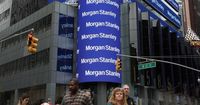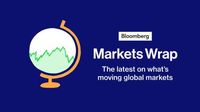Wall Street has been riding high this September, with U.S. stocks hovering near record levels and investors bracing for a pivotal Federal Reserve decision next week. As of Friday, September 12, 2025, the S&P 500 edged up 0.1% from its all-time high set the day before, while the Nasdaq composite climbed 0.5%, also near record territory. The Dow Jones Industrial Average, however, dipped 188 points, or 0.4%, as of early afternoon trading, according to the Associated Press.
This strong finish capped Wall Street’s best week in the last five, fueled largely by mounting expectations that the Federal Reserve will cut its main interest rate for the first time this year at its meeting scheduled for September 17. Mortgage rates have already begun to drop in anticipation, giving prospective homebuyers and investors a reason to cheer. The optimism is rooted in recent economic data suggesting the U.S. job market is finding a sweet spot: slowing just enough to convince the Fed that some stimulus is needed, but not so much as to tip the country into recession. Inflation, meanwhile, remains in check—at least for now.
“Investors, and I think the Fed, are convinced that we are not on the verge of a surge in inflation,” noted Scott Wren, senior global market strategist at Wells Fargo Investment Institute, as reported by the AP. That sentiment was echoed by the latest University of Michigan survey, which found that consumers expect inflation to hit 4.8% over the next year—the same as last month. While longer-term inflation expectations inched up, they remain below levels seen in April, when President Donald Trump announced a new round of worldwide tariffs.
But the market’s buoyancy comes with a caveat: if the Fed doesn’t deliver the three rate cuts traders are hoping for this year, stocks could retreat, even if the economy avoids recession and Trump’s tariffs don’t send prices soaring. The stakes are high, and the mood is both hopeful and cautious.
Some companies have felt the turbulence more than others. RH, the high-end furniture retailer, saw its shares tumble 4.7% after reporting disappointing profits and revenue for the latest quarter. CEO Gary Friedman blamed “the polarizing impact of tariff uncertainty and the worst housing market in almost 50 years.” Oracle shares also fell 4.1%, though that barely dented its surge earlier in the week, when the company celebrated its best trading day since 1992 on the back of multibillion-dollar artificial intelligence contracts. By contrast, Super Micro Computer rose 2.9% after announcing it had begun high-volume shipments of AI-ready equipment using Nvidia’s Blackwell Ultra technology.
Microsoft, meanwhile, climbed 2% after European Union regulators accepted changes to its Teams platform, resolving a long-running antitrust investigation. The European Commission said Microsoft’s final commitments—including unbundling Teams from its Office suite—were enough to address competition concerns.
International markets largely echoed Wall Street’s optimism. Japan’s Nikkei 225 notched another record, rising 0.9% to 44,781.09, while Hong Kong’s Hang Seng index rallied 1.5% to 26,484.65, buoyed by reports that Beijing may direct state banks to help cover local governments’ unpaid bills. Other Asian markets joined the rally: Seoul’s Kospi climbed 1.3%, Australia’s S&P/ASX 200 added 0.7%, India’s BSE Sensex rose 0.3%, and Taiwan’s Taiex was up 0.6%.
Bond markets, however, told a slightly different story. The yield on the 10-year U.S. Treasury rose to 4.07% from 4.01%, reversing some of the week’s earlier declines. Treasury yields had been falling as hopes for a Fed rate cut grew, but Friday’s uptick suggests some investors are hedging their bets. In the oil markets, benchmark U.S. crude slipped 53 cents to $61.84 per barrel, while Brent crude fell 51 cents to $65.86. The U.S. dollar strengthened to 147.51 yen, and the euro dipped to $1.1729.
Behind the scenes, political drama continues to swirl around the Federal Reserve. President Donald Trump has openly threatened to fire Fed Chair Jerome Powell—whom he’s dubbed “Too Late”—and has escalated his efforts to remove Federal Reserve Governor Lisa Cook, accusing her of mortgage fraud. On Thursday, the Trump administration asked an appeals court to remove Cook from the Fed’s board by Monday, ahead of the central bank’s next rate decision. Trump had initially tried to fire Cook in August, but a federal judge ruled the move illegal and reinstated her.
The Fed’s upcoming decision is being watched not just for its immediate impact on borrowing costs, but for what it signals about the broader economic outlook. The latest U.S. jobs report confirmed mounting concerns about a weakening labor market, which, together with inflation data that remains stubbornly above the Fed’s 2% target, has made the case for a rate cut more urgent. In August, consumer prices were 2.9% higher than a year earlier, a slight uptick from July’s 2.7% rate, according to the AP. Still, most traders believe the Fed will prioritize the slowing job market over inflation risks.
One of the biggest questions looming over the market is what will happen to the record $7.6 trillion currently parked in money market funds. These cash-equivalent investments have been generating attractive yields—averaging 4.3% annually—thanks to the Fed’s previous rate hikes. But as rates fall, will this “wall of cash” flow into riskier assets like stocks and bonds, fueling another rally?
Peter Crane, president of Crane Data, is skeptical. “The rates matter but much less than most people believe,” he told CNBC. Historically, money market fund assets have only declined during periods of severe economic stress and near-zero rates, such as the dotcom bust and the financial crisis. Even if the Fed cuts rates to 3%, Crane believes most of the cash will stay put, especially since bank deposits pay a paltry 0.5% in comparison. “Bank deposits wildly underpay,” he said. Roughly 60% of money market fund assets are held by institutions and corporations, which are unlikely to shift their cash into the stock market regardless of rate changes.
Still, some experts say that as yields on cash investments decline, a portion—perhaps 10%—could move into higher-risk, higher-return opportunities. Todd Sohn, a strategist at Strategas Asset Management, suggests that investors looking to shift out of money funds might consider longer-duration treasury ETFs or diversifying into small- and mid-cap stocks. But he cautions that risk tolerance and tax considerations should guide any such move, and that most investors with diversified portfolios probably don’t need to chase more exposure to large-cap growth or tech stocks, which already dominate the market.
For now, the consensus is that the Fed’s policy shift will be gradual and data-dependent. As Shelly Antoniewicz of the Investment Company Institute put it, “The pace of those cuts will remain data-dependent as the Fed watches both the labor market and inflation, and manages its dual mandate of full employment and price stability.”
In the end, the market’s record highs and the looming Fed decision have created a moment of anticipation—and anxiety. Whether the “wall of cash” will move, and how investors will respond to a new era of lower rates, remains to be seen. But for now, Wall Street’s record-setting run and the Fed’s next move are keeping everyone on their toes.





